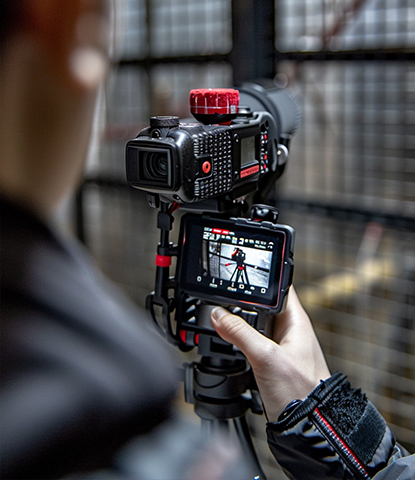

Time:2025-09-10 Views:1

The dimensions of camera stands are crucial factors that significantly influence their usability, compatibility, and suitability for various applications. Camera stands come in a wide range of sizes, and understanding the different dimensional aspects is essential for photographers, videographers, and other users to select the most appropriate stand for their specific needs.
One of the primary dimensional considerations is the height of the camera stand. The height can vary from compact, table - top models that may only reach a few inches to large, professional - grade stands that can extend several feet into the air. Table - top camera stands, typically ranging from 6 to 24 inches in height, are designed for close - up shots, product photography, or use in confined spaces where a low - profile setup is required. They are portable and easy to set up on desks, tables, or other flat surfaces. On the other hand, full - sized floor stands can start from around 3 feet and go up to 10 feet or more. These taller stands are ideal for landscape photography, event coverage, and videography, where capturing a wider field of view or shooting from a higher vantage point is necessary. Some stands feature adjustable height mechanisms, such as telescopic legs or extendable columns, allowing users to customize the height according to their shooting requirements.
The base dimensions of camera stands also play a vital role. A wider base generally provides more stability, reducing the risk of the stand tipping over, especially when supporting heavier cameras or in windy conditions. Tripods, a common type of camera stand, usually have three legs that can be adjusted to different lengths and angles. The spread of the legs determines the overall footprint of the tripod on the ground. Larger tripods with a wider leg spread are more stable but may take up more space, while smaller, more compact tripods are more portable but may sacrifice some stability. Monopods, which have a single leg, are highly portable but rely on the user's balance and support to maintain stability. Their base often consists of a small foot or spike that provides minimal ground contact.
In addition to height and base dimensions, the folded or collapsed dimensions of camera stands are important, especially for users who need to transport their equipment frequently. Compact and lightweight stands that can be folded into a small size are highly desirable for travel photographers, journalists, and vloggers. Some stands are designed with innovative folding mechanisms that allow them to be collapsed into a fraction of their extended size, making them easy to fit into camera bags, backpacks, or luggage. For example, some travel tripods can be folded down to a length of just 12 - 18 inches, enabling convenient transportation without sacrificing too much functionality.
The diameter or width of the stand's central column or legs is another dimensional aspect to consider. Thicker columns and legs are generally stronger and more durable, capable of supporting heavier camera equipment. However, they also add to the overall weight and bulk of the stand. On the other hand, thinner, more lightweight designs may be more suitable for lighter cameras but may not be as stable or sturdy. When choosing a camera stand, users must carefully evaluate the dimensions in relation to their camera gear, shooting environment, and transportation needs to ensure optimal performance and convenience.
Read recommendations:
5 Axis Cnc Milling Machines Cnc Machined Aluminum Alloy Parts Turning Precision
wooden camera quick release plate